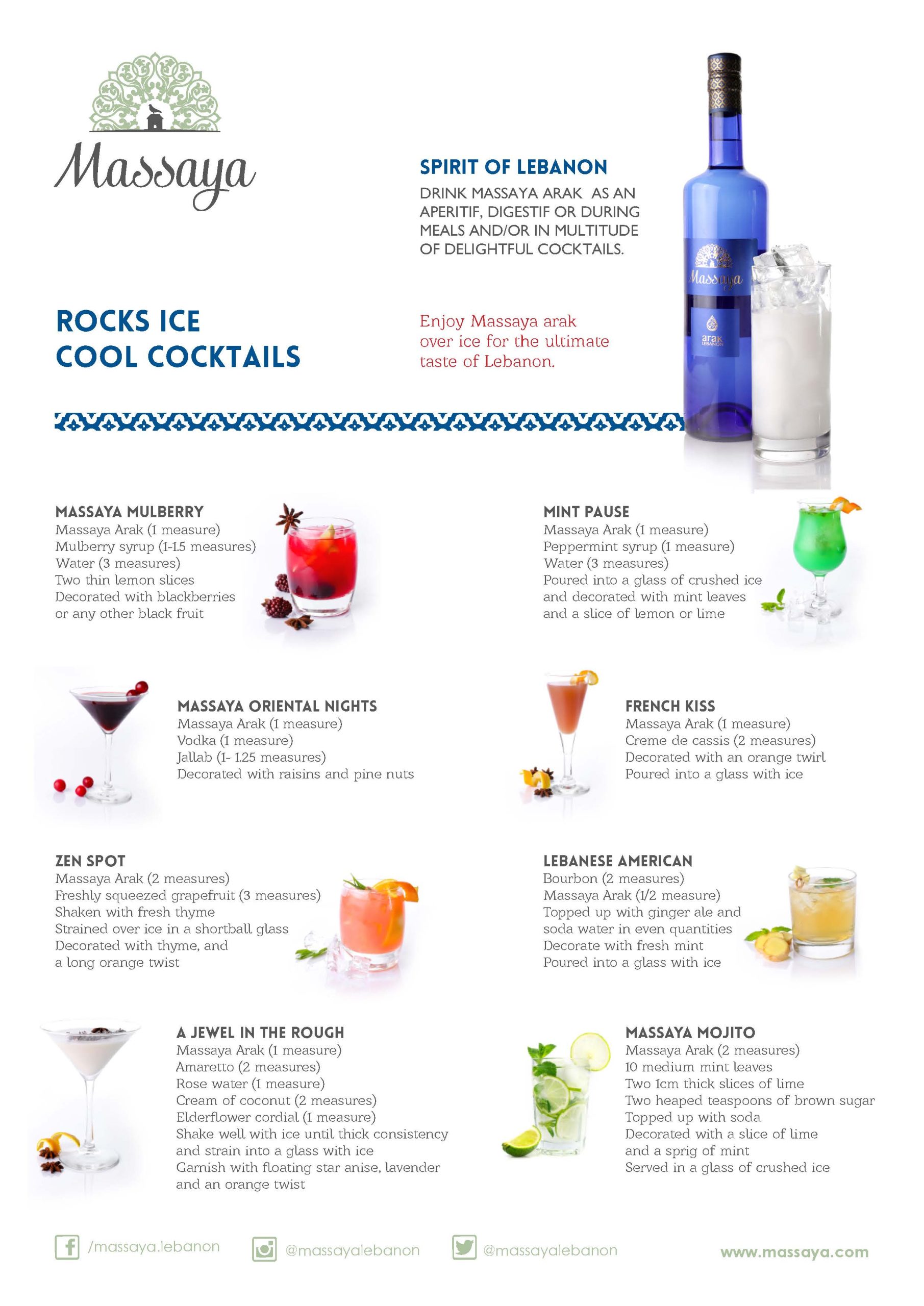Massaya Arak: The Spirit of Lebanon
Arak has a beguiling aniseed flavor and freshness that cleanses the palate and aids digestion. It is often served as an aperitif and then as the perfect accompaniment to a classic selection of mezze, the array of dishes with contrasting aromas that starts many lunchtime or evening meals in Lebanon. Arak works particularly well with the mezze dishes that include parsley, raw tomatoes, lemon, mint, and garlic – flavors that are sometimes harder to match with wine.
In winter, when the cuisine is based on beans, potatoes, stews, wines offer a more compatible accompaniment.
Our ancestors used to drink in winter the heart-warming wine and a refreshing arak in summer. This was a perfect way to follow the cycle of nature. In September they picked the grapes, ate what they could, and fermented what was left into wine. In winter they drank the wine and the leftover was distilled into arak, and then in summer the arak was consumed with the mezze. It was a pragmatic and environmentally friendly way of life! The Phoenicians and their descendants were respectful of nature’s cycles; they were pioneers of minimizing the ecological footprint, way before it became a hot topic.
Celebrating Massaya Arak
There is a saying in Lebanon, “the better the wine, the better the arak.” That’s why we take special care to select the finest plump Obeïdi grapes that are grown extensively in the Beqaa. The grapes are harvested by hand in September, then mechanically crushed and pressed to obtain the best Obeïdi juice.
Then come the following steps:
Obeïdi grapes are fermented into wine: 13%.
Wine is distilled in Moorish-lid stills into brouilli: low grade alcohol, around 45%.
The brouilli is distilled in the Moorish-lid stills into second chauffe: medium grade alcohol, around 65%.
The second chauffe is macerated with green aniseed grown in Hiné and distilled: low grade arak, around 70%.
The arak is then transferred to ageing vessels, special jars commissioned from Beit Chabib, in which the liquid becomes a high-grade arak after the evaporation of the angel’s share – that is the low-density alcohol that prevents arak from being smooth and silky.
It is only once the arak is properly rested, matured, and diluted to 50% that it deserves to be bottled in the distinctive blue bottle of Massaya arak.
From the start Massaya set the bar high and refused to compromise with shortcuts. Quality is our primary objective along with limiting our environment impact and supporting local suppliers.
Commonly, there are four important steps to the arak sensation. First, pour the clear spirit into a fresh glass. Then add twice as much water along with some ice cubes. Admire for a moment the liquid’s transformation into an aromatic cloudy white creation, then taste. If you are drinking arak as an aperitif we recommend diluting the spirit by as much as six parts water to one park arak.
But the Massaya way is different: there is no need for water for a good arak. Pour two fingers of arak into a clean long drinking glass, fill the glass with ice and then shake it little bit before topping it again with ice. Start with a small sip and as ice melts you will enjoy a very refreshing, tasty and smooth arak.

